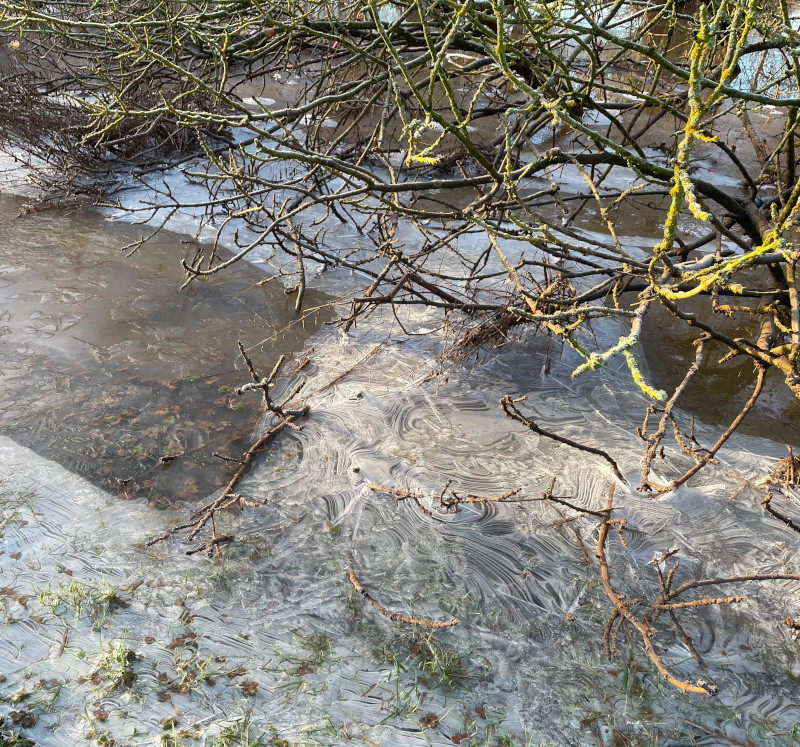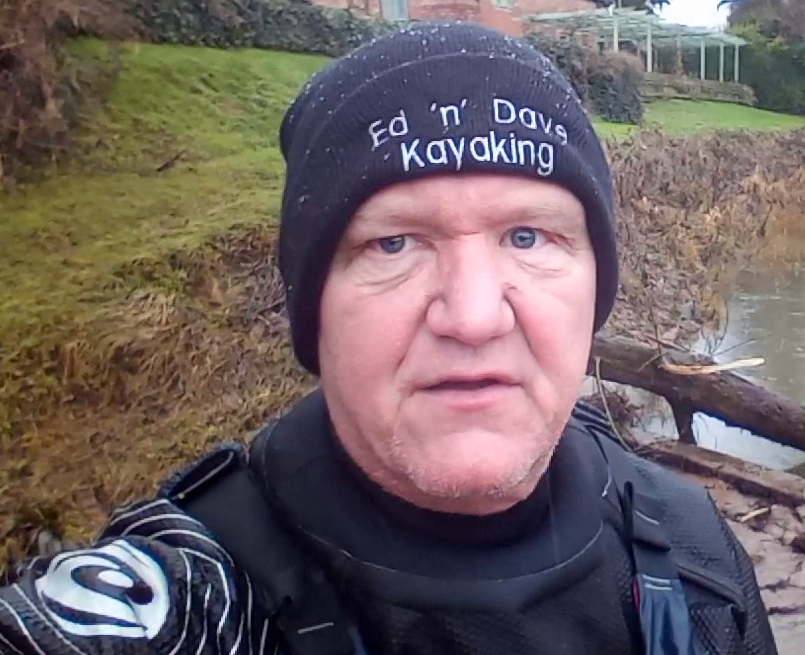How to dress for cold weather paddling and keep warm when kayaking, canoeing or stand up paddle boarding (SUP)
When you dress for cold weather paddling it can be tricky. You need to find a balance of being warm enough, but not too warm such that it is uncomfortable.
Cold weather is defined as low temperatures against the average. This will vary from region to region around the world.
In the UK, cold weather is when the air temperature is below 10 degrees centigrade. This gives a range over the winter months from 10 degrees through to -5 degrees as an average.
In other countries, these temperatures could fall as low as -30 degrees or more.
It's clear that whatever the temperature during cold weather, how you dress for your paddling is going to be critical to how safe and comfortable you are.
Being too cold can just mean you feel uncomfortable when paddling. Or, in extreme cases, it can mean you lose feeling in your extremities and you risk hypothermia.
So how do you dress for cold weather paddling?
Cold weather paddling - use layers
A key principle in how to dress for cold weather is layering. Layering is the process of using several layers of clothing to make up your full outfit.
The layers provide warmth, wind and water resistence.
Layers can be added or removed as the temperature permits.
There are three main layers:
- Base layer. This is a thinner garment that is next to the skin and helps to wick away moisture to maintain your core body warmth. For example, thermal top and leggings.
- Mid layers. This is a slightly thicker layer that focuses on keeping you warm. You may have more than one mid layer depending on the coniditons. For example, fleece top and tracksuit/fleece trousers.
- Outer layer. This is a layer designed to keep out the wind and/or rain. It is usually waterproof and has seals around the cuffs and legs. The goal of this layer is to protect the mid and base layers and keep them dry. For example, drysuit or dry cag and dry trousers.
Combining these layers maximises your chances of being warm, keeping dry and staying safe.
Dress for the water temperature not the air temperature
 A super cold day - about 1 degree C and the river has frozen
A super cold day - about 1 degree C and the river has frozenYou may have heard this phrase before. Dress for the water temperature not the air temperature.
It means that your outfit should be geared towards keeping you warm and dry in the water more than just keeping you warm in the air.
This is a great way to think about it and one I would recommend taking.
In the winter, the water is generally going to be the most dangerous aspect of your paddle. Water will lower your body temperature much faster than air. You will rapidly become hypothermic in water without the correct outfit.
Creating your outfit with this in mind gives you the best chance of survival if things go wrong.
Dave's experiences...
Dave has been paddling for many years in most kinds of weather. He tries to dress for cold weather and generally has been successful! If anything, he is over cautious. He perhaps throws on an extra layer where it's perhaps not needed.
However, he has always been on the warm side of the line when paddling even in freezing temperatures.
This cannot be said for some of the people he has seen paddling over the years. Some have been dangerously close to hypothermia because they decided to dress lightly for the weather.
He has seen experienced paddlers with no pogies/gloves on, short sleeve cags, no hat and even shorts in near freezing conditions. This is dangerous and inconsiderate to the rest of the group.
Never be afraid or embarassed to wear all the clothing you need to stay warm. This includes pogies/gloves, skull cap or hat and the correct layers to keep you dry and warm.
And... don't worry what you look like. Fashionable is often not warm. Warm is often not fashionable, but always the best thing to wear!
Suggestions for how to dress for cold weather paddling
 Dave on a particularly cold paddle. Not even a dry cag - brrrr, it was cold
Dave on a particularly cold paddle. Not even a dry cag - brrrr, it was coldHere are some suggestions of what to wear and how to dress for cold weather paddling.
This list is not exhaustive and you can add to it or amend it as you see fit for your needs.
Base layer: Cotton thermal long sleeve top (short sleeve in warmer conditions), cotton thermal long sleeve trousers and underwear.
Mid layer: Fleece long sleeve top (no zip) and fleece trousers or thermal one piece undersuit. In extreme conditions, double up this layer with an extra top.
Outer layer: Drysuit or dry cag with dry trousers.
In moderate conditions, you might replace the outer, mid and base layer with a high quality wetsuit.
Feet: Waterproof socks (add one pair of normal socks too for extreme conditions) with neoprene boots.
Head: Neoprene skull cap or fleece hat depending on whether you are wearing a helmet or not.
Hands: Thermal lined waterproof pogies or gloves.
Off the water: Towel/changing robe and a complete change of dry clothes including a fleece or padded jacket, hat and gloves.
Emergency off the water: Sleeping bag and/or thermal blanket.
Getting changed
When you get changed before and after your paddle, this is a time when you can be exposed to the elements.
To minimise the lowering of your core body temperature:
- Have all your clothes ready for getting changed before you start getting changed. This minimises faffing around.
- Get changed in your car/van and out of the wind/rain.
- Stand on a mat to avoid your feet getting cold.
- Get changed as fast as you can and make sure you are completely dry before putting on dry clothes.
- Put your hat and gloves on as soon as you can.
- Put on a wind/waterproof jacket as soon as you can.
- Unload/load your kayak, canoe or SUP as quickly and safely as you can.
- Make yourself a snack and a hot drink.
- If you are super cold, get in your car/van and into your sleeping bag/thermal blanket to warm up.
How are the group dressing for their paddling?
It's important to keep an eye on the rest of your group too. How are they dressing for their paddling? Do they have the correct layering clothing?
In an emergency, are they going to be safe and warm?
The reality of the situation is that you will become responsible for them in an emergency. They may be incapacitated with cold and unable to proceed. It then falls on you and the rest of the group to support them.
With this is mind, always do a check of your group BEFORE you start on the trip. Only when you are happy should you proceed.
Where to get your cold weather paddling gear from
 The internet presents many options for buying paddling clothing and kit
The internet presents many options for buying paddling clothing and kitThere are lots of places to buy your cold weather paddling gear both online and in store.
Doing a simple search will give you lots of options. Do shop around, check the store/gear reviews and buy from reputable stores.
However, you don't have to buy new.
There are plenty of options for getting great gear at great prices:
- Second hand auction/sales sites (eg. Ebay, Vinted or Facebook marketplace). These are generally used items from end users. You can check the items, the sellers and decide for yourself whether they suit your needs.
- Hand me downs from paddling clubs. There will be paddlers that are upgrading their clothing and getting rid of the old stuff. Ask around and see if you can have these items. They may be worn but you might be able to get a season out of them.
- Charity shops (eg. BHF). These are a great place to look for your clothing. Don't worry about colours or styles (no one will notice). Go for quality and function. Especially good for fleece jackets. They do replace stock often so go back every few weeks and they should have more items.
- End of season sales (eg. Escape Watersports). Many retailers have end of season sales for paddling clothing and equipment. It may not be the latest styles or colours and sometimes sizes are limited, but you can save money.
- Discount codes (eg. Paddle UK). Some organisations give discount codes for popular paddling retailers as part of their service. For example, Paddle UK regularly give discount codes for Gill and other paddling clothing and equipment suppliers (Dave got his drysuit with a discount code (40% off from Gill)).
Good luck and always stay warm!
PS. Paddlesports can be dangerous.
Read our safety disclaimer - here

New paddling inspiration, tip, trip or technique video EVERY week! Watch Ed, Dave and Moo on their kayaking, canoe and SUP adventures. It's all about having fun on the water. 169,000+ views, 100+ videos & 700+ subscribers so far! Click below to start watching:
Ed & Dave Kayaking Youtube Channel
WANT TO HELP US?
We really value your visit to us today. We run this website and our Youtube channel to provide paddling inspiration, tips, trip and technique content to you. We love being out on the water! If you enjoyed your visit, you can support us by using the links below:
Buy us something on our wish list
Thank you
NEED WEB HOSTING?
We recommend IONOS. Great service, technical support and stable hosting. Click the link below to find out more:
IONOS Web Hosting - RECOMMENDED!



